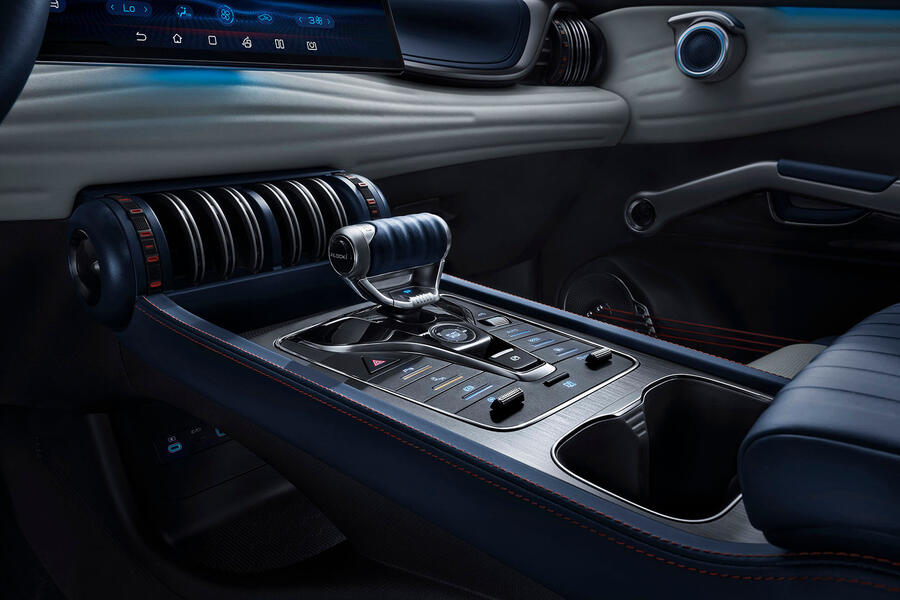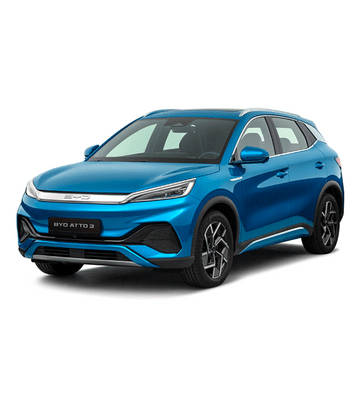Usually, we hear rumblings that a company is planning a certain new model. Then, a few months later, we might see a concept, or some spy shots will surface that show it testing in heavy camouflage. Some way down the line, after what seems like an eternity, it will be officially unwrapped, and if we’re really lucky, we’re invited to drive it within around half a year – first on a carefully curated scenic launch route in foreign lands and then, some months later, on UK roads shortly before it finally starts making its way to customers’ driveways.
That’s not what’s happened with the BYD Atto 3. Our hands gripped the steering wheel for the first time about 14 hours after we saw it in the metal for the first time and about 13 hours after we got official confirmation it was coming to the UK. And by ‘coming to the UK’, we mean it’s probably on the boat already. In line with its rapid-fire and hugely ambitious global growth ambitions, BYD – which you might know for its UK-built electric buses, or perhaps for being the world’s biggest EV seller in the first half of this year (seriously) – will introduce three cars simultaneously to Europe by the end of this year: the premium-oriented Han saloon and Tang SUV, with four-wheel drive and up to 510bhp, and this much more mainstream and lower-powered compact crossover, the Atto 3.
Not that the Atto feels for one second like the runt of the litter. Climb aboard and marvel at how BYD has achieved what so few established brands have managed in recent years: conceived a cabin that feels at once exciting and liveable. The large, 12.8in touchscreen rotates as you please (which sounds like a gimmick, but actually it’s natural to set it to landscape for sat-nav and portrait for Spotify, for example), the door handles are sculpted hand grips atop the in-door speakers and there are actual guitar strings – on which you can play actual songs – in the door pockets. Don’t show the kids.

The Atto 3 is the first model atop BYD’s slick new e-Platform 3.0 architecture, so doubly important, but there’s only so much that can be said about the dynamic and accelerative performance of a new car after a couple of supervised 2.8-mile laps around a crumbling airport perimeter road at fairly tame speeds – so there’s no star rating at this stage. Perhaps the most insightful and most revealing thing we can say about its driving behaviour, though, is that it is almost entirely unremarkable.
Be in no doubt, however, that this is good news: off-the-mark acceleration feels swift (if not categorically ‘rapid’), the steering is responsive but a touch unfeelsome and the suspension is stiff under load but forgiving of imperfections. Not a driver’s car by any stretch – hence it has half the power of BYD’s top-rung EVs – but more than feasibly capable of attracting style-focused buyers in urban areas who care more about low-speed manoeuvrability and visibility than raw pace and B-road readiness.
Of course, the Atto’s usability credentials will be crucial in luring buyers away from the Volkswagen and Kia configurators, and it’s good news here, too. The 60.5kWh (net) battery supplies a competitive WLTP range of 261 miles and can be charged at speeds of up to 88kW, and family buyers will be pleased with the 440-litre boot and roomy rear seats. Plus, BYD’s bespoke infotainment software – operated via a crisp, clear and graphically attractive touch interface – seems as intuitive as it is functional, but sensibly leaves some of the most commonly used functions to good ol’ buttons and switches on the steering wheel and centre console.
First impressions are promising, then. But refreshing though it is for such a huge brand to move so quickly and with such conviction, the niggling frustration remains that BYD doesn’t see fit to build the attractive and compellingly specified Han saloon with its steering wheel on the right-hand side, nor even the luxurious Tang SUV. Even the most adventurous of start-ups would agree that launching an attainable C-segment electric SUV is about as on-trend as it is possible to be right now, but there would surely be some brand-building value in selling those lower-volume, higher-margin halo models while the Atto did the crowd-pleasing grunt work on the sales charts.
However, in terms of its fundamentals, the Atto represents something of a new era for BYD (“is it already done with the first era?” etc) and is better placed to match its direct rivals for functionality, technical appeal and performance, given that it rides on latest-generation hardware. A lot depends on where BYD decides to land on pricing. Too low, they say, and they would risk devaluing the technology contained within its cars. Too high and they dent their chances of capturing the imagination of a largely brand-agnostic target market.
But for now, it suffices to say that the Atto stacks up enticingly against its competitors in terms of raw specification, and it is individual – quirky, even – enough in its conception to stand a real chance of gaining traction in this unrelentingly competitive segment. The star rating will come when we drive a showroom-spec car on public roads – probably in the UK – in the next couple of months, but the takeaway here is that the Atto 3 is likely to be more than worth the short wait.

